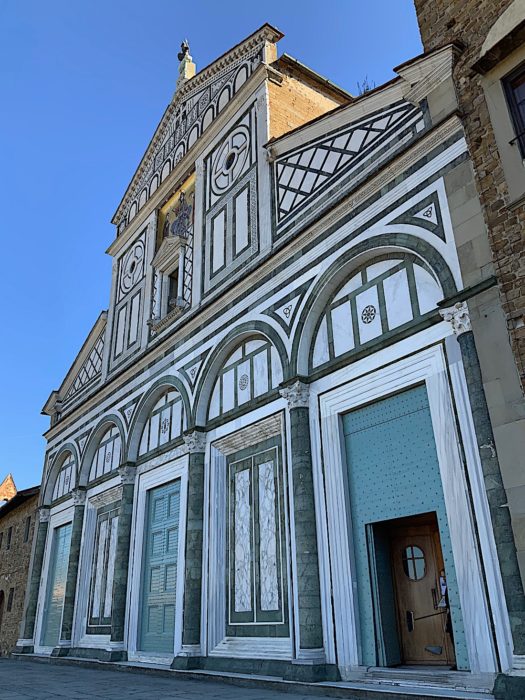
Age
1018
Designer
Unknown
The Basilica of San Miniato al Monte is located in one of the highest places of the city and is one of the best examples of florentine Romanesque style. The basilica is dedicated to San Miniato, a martyr who arrived in Firenze around 250 A.D., lived as a hermit and was beheaded during the anti-Christian persecutions; according to the legend, after the execution, the hermit went, with his head in his hand, in the place where the basilica currently stands. The oldest historical testimony of a chapel dedicated to San Miniato dates back to 783; in the same place, in 1018, the florentine bishop Ildebrando began to build a basilica that would better guard the relics of the saint, found by the same bishop under the present Cimitero delle Porte Sante, one of the oldest cemeteries in Firenze. The façade of San Miniato is one of the masterpieces of florentine romanesque architecture; it is divided into two main bands: the lower one is characterized by five round arches supported by columns with Corinthian capitals; the upper one exhibits two symmetrical gables of the side aisles, decorated with geometric shapes by two-colors stone, white marble and green serpentinite; the central part is characterized by an ideal gallery supported by four pillars, which divide it into three parts.
At the centre of the loggia, there is a window framed by two columns, supported by marble lion heads; the columns are surmounted by a frontispiece at the centre of which is an inlay of a vase between two doves. In the upper panel it is possible to observe a mosaic (Christ between the Virgin and San Miniato) that dates back to 1260. Finally, the upper pediment has a series of nine, white and green, arches surmounted by a cross and ornamental motifs; the façade is crowned by a copper eagle, a symbol of the Arte di Calimala (cloth merchants’ guild), who was responsible for the church’s upkeep from 1288. The eagle which crowns the façade was their symbol.
The cladding of the façade is obtained with Serpentinite, Marbles, Apuan Marbles; the side panels are in Pietra Serena Sandstone; the columns of the lower level are in Serpentinite, those of the upper level are in white Marble; the bases of the columns, the Corinthian capitals, the lion heads and the frontispiece in white Marble; the staircase access is made of Pietra Serena Sandstone.

